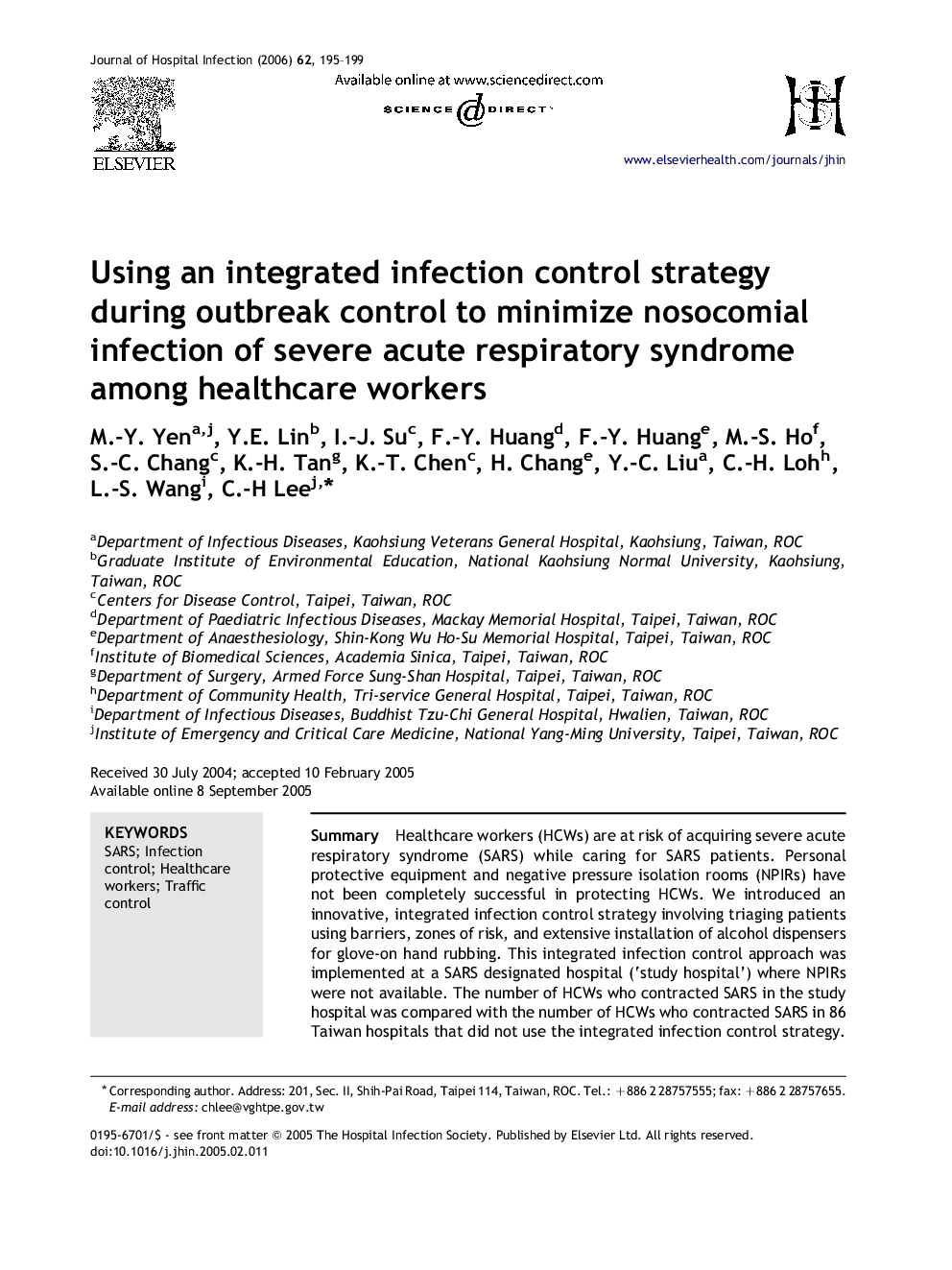| Article ID | Journal | Published Year | Pages | File Type |
|---|---|---|---|---|
| 3374298 | Journal of Hospital Infection | 2006 | 5 Pages |
SummaryHealthcare workers (HCWs) are at risk of acquiring severe acute respiratory syndrome (SARS) while caring for SARS patients. Personal protective equipment and negative pressure isolation rooms (NPIRs) have not been completely successful in protecting HCWs. We introduced an innovative, integrated infection control strategy involving triaging patients using barriers, zones of risk, and extensive installation of alcohol dispensers for glove-on hand rubbing. This integrated infection control approach was implemented at a SARS designated hospital (‘study hospital’) where NPIRs were not available. The number of HCWs who contracted SARS in the study hospital was compared with the number of HCWs who contracted SARS in 86 Taiwan hospitals that did not use the integrated infection control strategy. Two HCWs contracted SARS in the study hospital (0.03 cases/bed) compared with 93 HCWs in the other hospitals (0.13 cases/bed) during the same three-week period. Our strategy appeared to be effective in reducing the incidence of HCWs contracting SARS. The advantages included rapid implementation without NPIRs, flexibility to transfer patients, and re-inforcement for HCWs to comply with infection control procedures, especially handwashing. The efficacy and low cost are major advantages, especially in countries with large populations at risk and fewer economic resources.
